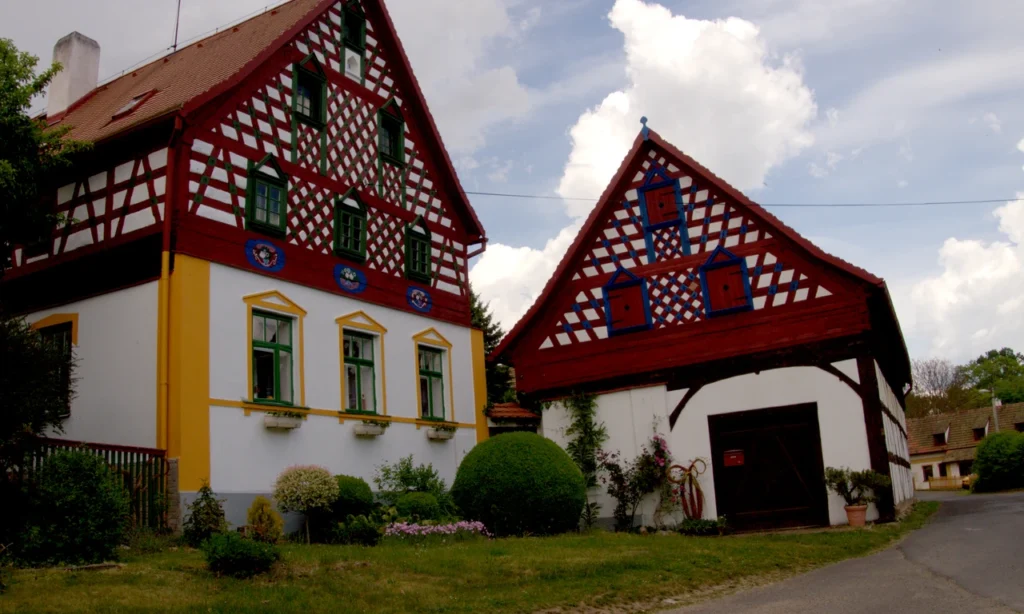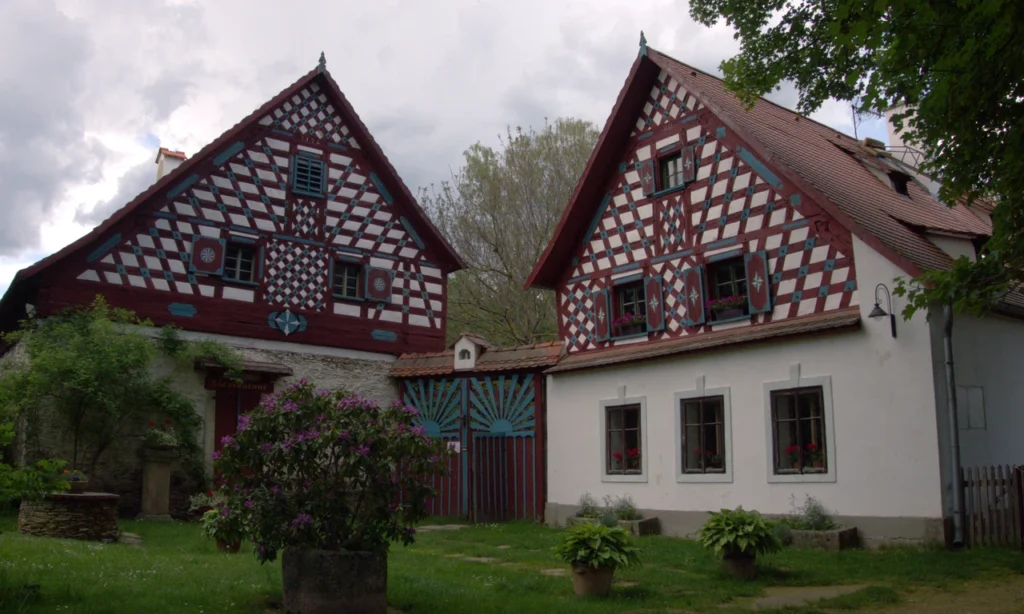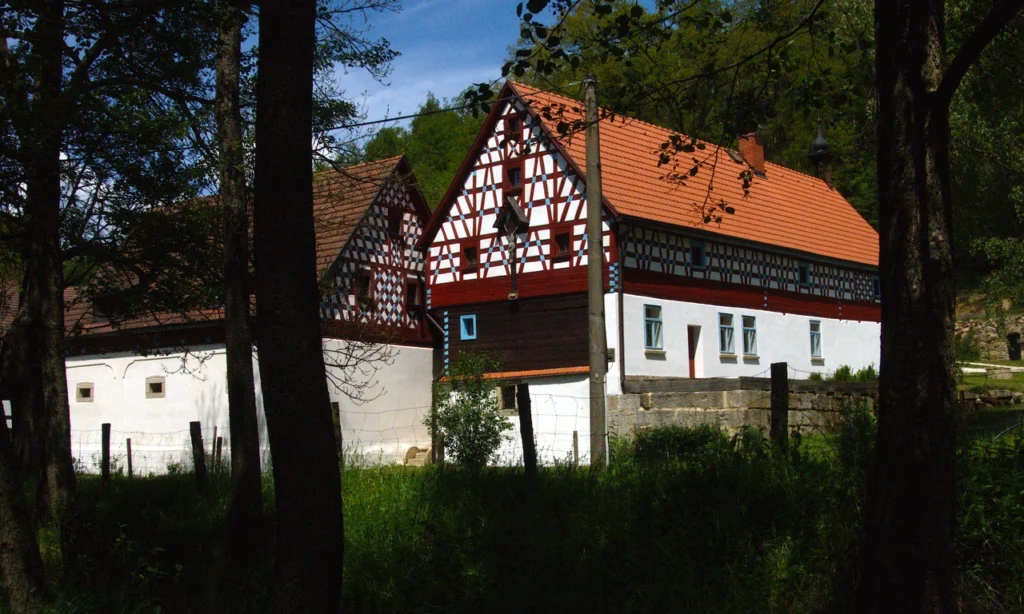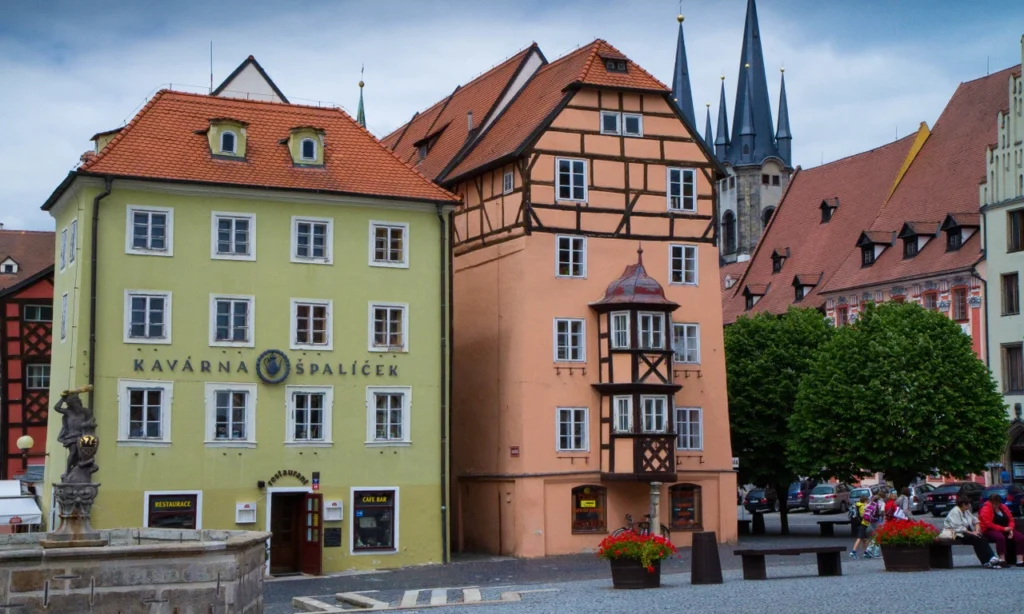Behind the folk architecture of the Cheb region




Get to know a variety of half-timbered buildings and Cheb folk architecture.
The Cheb farm is made up of a yard, a stable, a pigsty and a barn, which stand separately and do not touch each other. The distinctive feature of the Cheb house is the wood-decorated floor. The coloured planks are laid in such a way that they form a trellis. The basic colour of the building is white and the wooden elements are inserted into it, usually in a dark red colour.
Important places along the route:
Salajna Village Conservation Area: the village stretching around the Šitbořský brook has preserved a large collection of folk buildings typical of the Cheb region. The buildings are made up of large rural farmhouses with half-timbered floors from the 18th and 19th centuries.
Doubrava: The settlement is located near Cheb. It is a uniquely architecturally and urbanistically preserved village. It is mentioned in written sources as early as the beginning of the 14th century. In the premises of the oldest preserved Cheb half-timbered farmhouse – Rustler’s Farm – there is a private ethnographic museum with an exposition presenting household and farm equipment in the 18th – 20th centuries.
Cheb: A town with a thousand-year history. In the centre of the town there is the Spalicek – a group of 11 half-timbered buildings, a museum and Cheb Castle.
Seeberg/Ostroh Castle: the history of the castle dates back to the end of the 11th century and was a strategic point during the time of the Přemyslids. The current castle exhibition is dedicated to folk culture, agriculture and crafts of the Cheb countryside in the 19th century.
Farm Bernard: A farmhouse from 1922, today a centre of traditional crafts. A farmhouse, now a farmhouse, now a farmhouse in the old town of St. Bernard.
Estimated time
2:40 hod.
Length
124km
Start of the journey
Mariánské Lázně
End of the journey
Mariánské Lázně